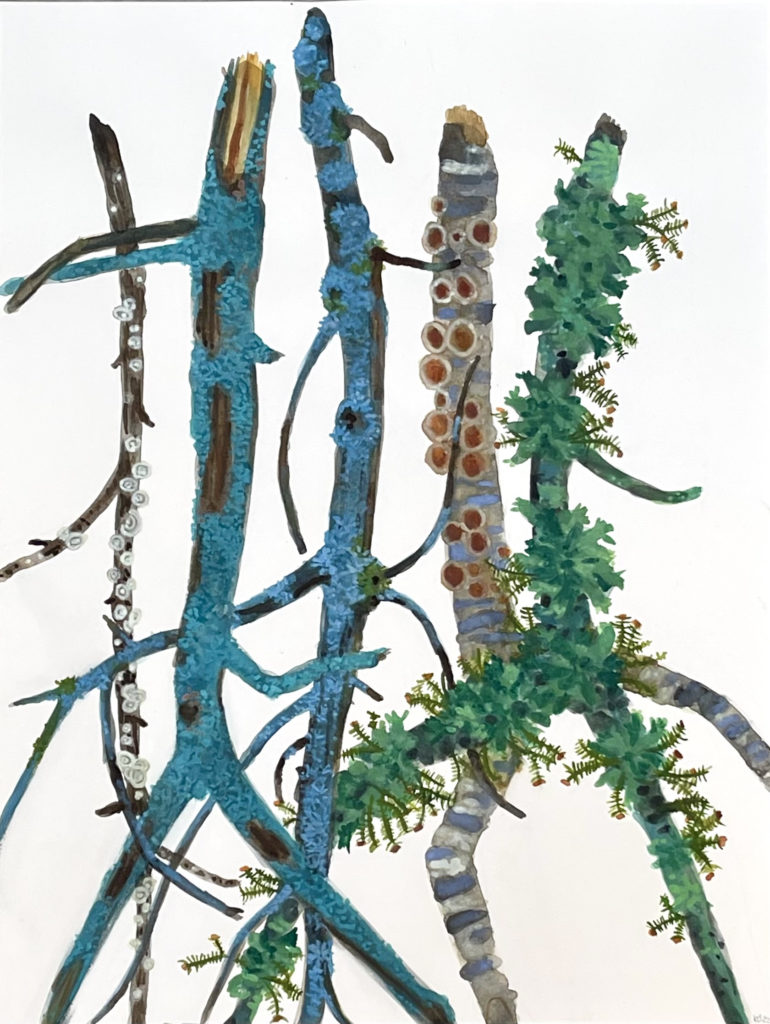The Times Union | By Tim Kane | Dec. 16, 2010
Stymied by the slow drying time of oil paint on big canvases, Katie DeGroot took a walk about a half decade ago on Yaddo’s grounds in Saratoga Springs to find solace as her stay at the retreat was winding down and nothing seemingly was getting done.
Among the gardens, DeGroot picked up a leaf and drew it, adding subdued yet richly hued watercolors almost instinctively. At the time, the Fort Edward artist was painting large-scale floral works with electric colors organized in squares like collaged murals. But pushing pigment around on wood panels became a hindrance to spontaneity.
The immediacy of watercolor — it dries almost instantly — and the impromptu stroll sparked a series of smaller “sketches” that find contemplation in birch and elm branches found lying on the ground disembodied from their roots.
To gaze at DeGroot’s pictures is to find abstraction in reality shaped by evolution and time, but also humanity in inanimate objects decaying. From a distance, her limbs aren’t appendages; they’re more like thin cylinders dancing away against an expansive white background. Move closer, color takes shape, nature is revealed with patterns of moss and mushrooms forming distinct shapes. Inch forward, characters and identities emerge, playing out small narratives.
“Cripple,” with a broken twig, hobbles across the frame with a simple happiness to even move. Two others saunter with the dance of attraction in “Hottie.” That work won the Marijo Dougherty and Norman Bauman Juror’s Award in the Artists of the Mohawk Hudson exhibition at The Hyde Collection in Glens Falls.

Q: Your works are minimalist, direct and simple, yet that doesn’t quite capture their essence, does it?
A: Well, at some level, but they are abstractions — I’ve always thought of them as surreal.
Q: But they’re clearly based on nature. How are they surreal?
A: The marks. They are representational, yes, of a found object, sticks, but that’s it. The marks, with color, even though reflecting something real, push the interpretation beyond reality, presenting a whole other idea.
Q: What is that?
A: They are something beyond just sticks, full of personality.
Q: Are they figurative abstractions then?
A: That’s interesting. I do humanize them; they are like friends. I guess they could fit into that category.
Read the full article at The Times Union >